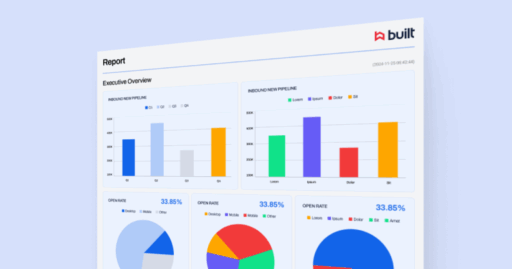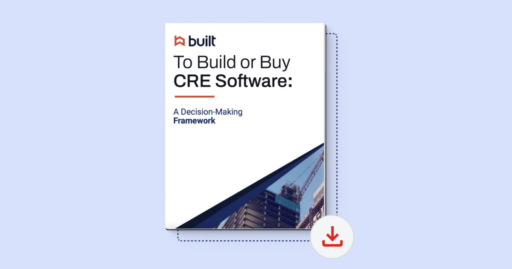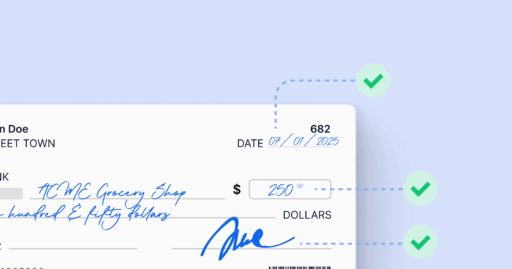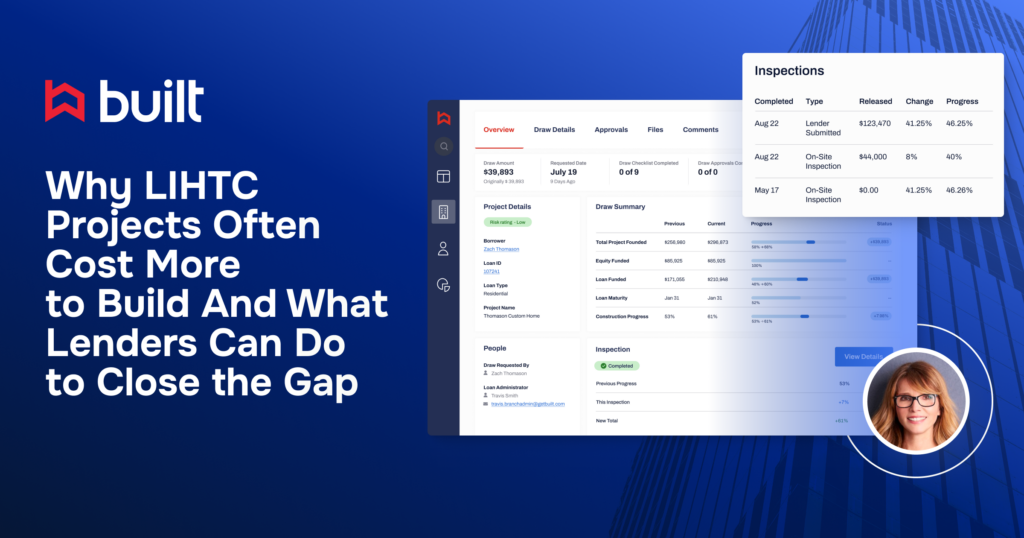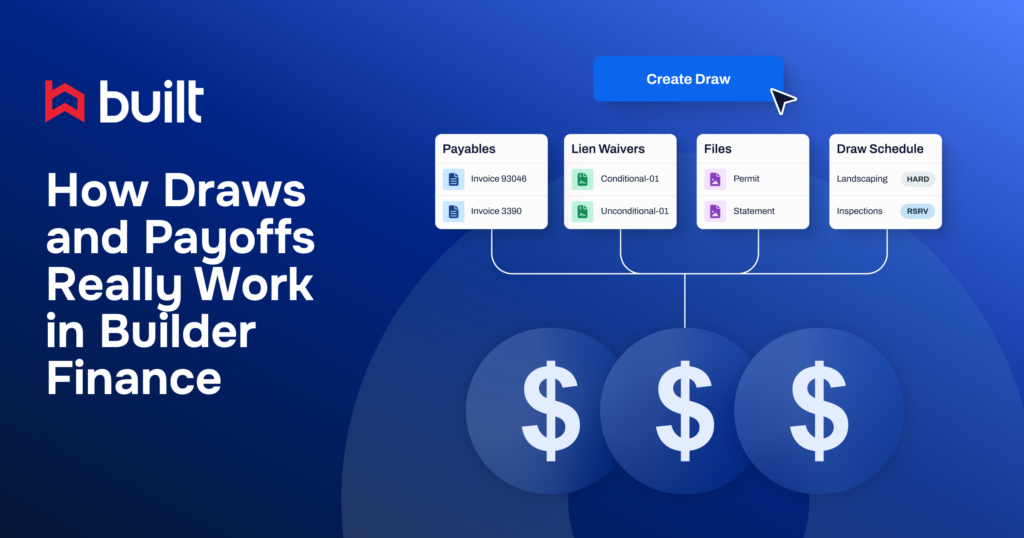
Top 5 Early Warning Indicators & What to Do With Them

The current methods and measurements used to identify problematic assets, such as loan delinquency, work well for typical market situations. Because of current market conditions, there needs to be an extra urgency for analyzing and managing risk. More diligence is key.
With the increase in interest rates, today’s market environment has been negatively impacted by regulatory, loan demand, and loan quality implications. Specifically, higher interest rates decrease loan production, which affects revenue. Especially on the CRE side, borrowers can struggle to meet debt obligations when rates spike. The cost to fund loans increases, which reduces profitability. Finally, scrutiny from regulatory agencies, and adjustments to monetary policy from central banks (capital and liquidity requirements, stress testing, etc.) adds another layer of pressure on profitability for lenders.
Data within the Built platform can be used to identify potentially distressed assets, which enables lenders to manage portfolios more effectively and make informed decisions about individual investments and overall portfolio health.
Built offers lenders access to unique data characteristics to help them manage their construction loan portfolio more effectively. By leveraging this information, lenders can improve their risk rating, loss prevention methodologies, and asset quality. Built lenders are considered elite due to their ability to access enhanced information regarding in-progress construction collateral. We’ve aggregated the top 5 most common early warning indicators that lenders can monitor within the Built platform and how to manage them so that potential risk doesn’t pose a real threat.
Pace
When taking out a construction-to-perm (CP) loan, various factors should be carefully considered to determine feasibility. One of these factors is how the construction is progressing compared to the time elapsed. By leveraging the data available in Built, lenders can predict maturing loans for balance sheet monitoring, and on a project level manage the conversion to a permanent process. This particular measurement is used to calculate the number of months that a borrower can make payments on two separate “house payments” for CP loan types before experiencing significant financial strain. It’s important to note that exceeding this threshold could potentially lead to delinquency and a deterioration of the borrower’s credit score. It’s vital to take a closer look at the interest reserve criteria and evaluate whether it’s feasible to proceed with the CP loan. By doing so, borrowers can feel confident that they are making informed decisions that will ultimately benefit their financial situation in the long run.
How Built Helps
Built’s Insights functionality enables users to delve into the nitty-gritty of their interest reserve efficiency. With this tool, users can gain a comprehensive understanding of how their interest reserve is performing and identify any areas that may require improvement. It’s a valuable resource for keeping a close eye on the risk associated with the loan and enables lenders to make data-informed decisions.
No Progress
During the initial stages of a project, the first 0-15% of the time allotted for completion is crucial. If no progress is made during this time, it could be an indication of potential entitlement delays or issues with the site conditions. This lack of progress may be considered a non-monetary default, which is similar to the Pace criterion that is used during the mid-to-late stages of construction. It is important to closely monitor the progress at the beginning of a project to ensure that any potential issues are identified and addressed promptly, which can help to avoid delays and keep the project on track.
How Built Helps
If you’re ever concerned about the progress of a project for which you’ve issued a loan, don’t worry—two helpful features within the application can assist you. Project Risk Assessment Report (Based on Total Loan Funded Amount) will examine all projects in the portfolio and highlight those that have one or more risk factors. It even organizes the projects by risk severity. Easily identify any areas that may need improvement. Additionally, the Loan-Level Budget Overview will give you a comprehensive look into the project ensuring that funds are being allocated effectively and efficiently. With these tools at your disposal, you can remain confident with consistent visibility into your portfolio.
Over Disbursements
When disbursements exceed the percentage of a project that is complete, it can lead to a variety of challenges for all stakeholders. These challenges may include late-stage capital calls, requests for additional advances, decreased equity, and even unfundable budget shortfalls due to market or value decreases. It is important for all parties to carefully monitor their disbursements and ensure that they are in line with the progress of their projects to avoid these potential issues.
How Built Helps
Similar to a “No Progress” notification, tracking Over Disbursements in CLA offers detailed project-level alerts. Insights dashboards and reports to help you monitor your spending. Risk alerts proactively notify the lender of projects that have been overdrawn, and individual project budgets track the overdrawn amount on a line-by-line level.
Built also helps prevent Over Disbursements by having configurable toggles for hard stops, messaging, and other controls. Features like these ensure the money disbursed is supported by the inspection if desired by the lender.
Multiple dashboards and reports are available for management and senior leadership that provides a list of loans within the portfolio where the disbursed amount exceeds availability released by inspection progress. By keeping a close eye on your disbursements, you can take proactive steps to address any issues and ensure that your financial resources are being utilized effectively.
Insufficient Budget
Simply put, multiple decreased draws and change orders can be signs that the budget won’t be enough to finish the project, and a budget shortfall may need to be requested. An insufficient budget is an obvious indication a project could be in trouble. If this happens, it’s important to be proactive and consider requesting a budget shortfall to ensure that the project can still move forward without any major setbacks. By addressing budget issues early on, you can help ensure that your project stays on track and that you’re able to deliver the results that you and your team are aiming for.
How Built Helps
CLA delivers increased visibility into previous draw requests. Obtain a comprehensive view of all the previous draw requests, their amounts, and the corresponding budget allocation. This way, you can easily analyze the data and identify any suspicious draw volumes that may lead to budget insufficiency.
Gain insight into draw history to identify a trend in draws not being supported by the inspection. For example, if the foundation is 50% complete with $50,000 released, but the draw is for 75% of the foundation or $75,000, was the inspection wrong, or is the foundation line item insufficient to complete?
By leveraging this powerful feature, you can proactively take measures to mitigate the risk and ensure that your project stays on track.
Count of Disbursements Per Month
If the disbursements per month exceed the lender’s baseline operating history, it could indicate some concerning issues. For instance, it may suggest that there are liens or “cash pay only” contractors or subcontractors involved who cannot establish typical trade lines to cover the costs of materials and labor. This could lead to financial complications down the line, which is why it is essential to keep a close eye on these disbursements.
How Built Helps
It’s crucial to monitor monthly disbursements closely to mitigate the risk of loan default. Built enables you to easily track disbursements and identify any red flags. On the project level, monitor all disbursement activity through “Draws”. This will give you an idea of the current disbursement trend every month as well as help you forecast the number of disbursements that will occur in the future. Specific reports monitor all transaction activity (draws, inspections, change orders, etc.) and allow the lender to analyze the transactions they would like to monitor across the portfolio (in this case it could be disbursement activity). Finally, you can also monitor the number of prepaid draws through the budget in “Fees” or in the “Inspection Rate” field. By leveraging Built, you can have peace of mind knowing that you have a reliable tool to help you stay on top of disbursements and protect your financial interests.
Today is the day for CLA
Built gives lenders the power of assured decision-making. Utilizing Built data alone or in conjunction with other data sources (such as loan origination, servicing, and third-party data), lenders can achieve three things:
- Identify the characteristics of problematic loans (or builders) based on operating metrics, status changes, and construction loan progress.
- Define the proactive and reactive asset quality metrics that serve as the foundation for identifying potentially problematic or troubled assets.
- Gain access to all of the data needed for a given project in a consolidated, actionable view so you can easily make informed decisions.
Moreover, accessing Built’s suite of lender solutions empowers customers to gather intelligence, find early warning signs, adapt procedures, costs, and prices, and reduce or avoid loss.
